That Wasn’t A Game Of Thrones Episode That Was A Live Action Fanfiction
That wasn’t a game of thrones episode that was a live action fanfiction
More Posts from Thejoyofscience and Others
WHY you shouldn’t feed these 10 foods to your dog
Dogs might think they’re human, but their physiology is not like ours. Humans might eat a wide variety of foods with little concern, but there are some very common human foods which you should not feed to your canine companion. You’ve probably seen the foods on this list before, but this is WHY these foods should not be fed to dogs.

Chocolate, Theobromine and Caffeine:
Everybody’s heard that chocolate is bad for dogs, and it’s true. Chocolate contains a compound called Theobromine. Theobromine is a type of compound called a methylxanthine, and another methylxanthine you might be more familiar with is caffeine. We know quite a lot about these compounds, as humans use them both medicinally and recreationally. The long version is that they all inhibit phosphodiesterase and antagonise adenosine receptors. The short version is that they increase muscle activity, including the heart, and stimulate the central nervous system.
This presents as dogs that have fast and irregular heart rates, high body temperatures and increased muscle activity that can progress to seizures.
It takes a reasonable amount of chocolate to poison a dog. One M&M isn’t going to do it. For a 35kg dog it’s going to take at least 3500mg of theobromine, which is about 5kg of typical milk chocolate. But only 1.2kg of dark chocolate or 600g of cooking chocolate, which is possible.
A 10kg dog needs much less. 1.5kg of milk chocolate would do it, which is only about 3 large Easter Bunnies, or 300g of dark chocolate, which is one packet from the cooking isle.
Chocolate is super tasty, dogs will absolutely gorge themselves on all chocolate available, so it’s not too difficult to poison smaller dogs with it.
And even if you get the dog through the toxicity, the high fat content of chocolate can go on to cause other gastrointestinal problems.
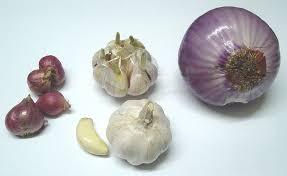
Onions & Garlic:
Yes, I said onions AND garlic. All allium species contain the same potentially toxic compounds, whether raw or cooked. That goes for spring onions too, it’s just really difficult to convince a dog to eat enough of them to be poisoned. These plants cause a Heinz body anaemia by inducing oxidative damage to the surface of the red blood cells, and for some reason breeds of Japanese origin like the Akita and Shiba Inu seem particularly prone to this toxicity.
It usually takes 10 to 15g per kg of body weight to poison a dog, but those breeds can be affected by as little as 5g per kilo. So for a big, 35kg dog, that’s about three medium sized onions.
Poisoning can happen all in one go, or it can happen by eating small amounts over a longer period of time, which is why it’s infuriating to see garlic being suggested as a natural remedy for things.
Bad cases will have to be treated with a blood transfusion as there is no direct antidote. And for interest, there are other things that can cause Heinz body anaemia too, like zinc.
Keep reading
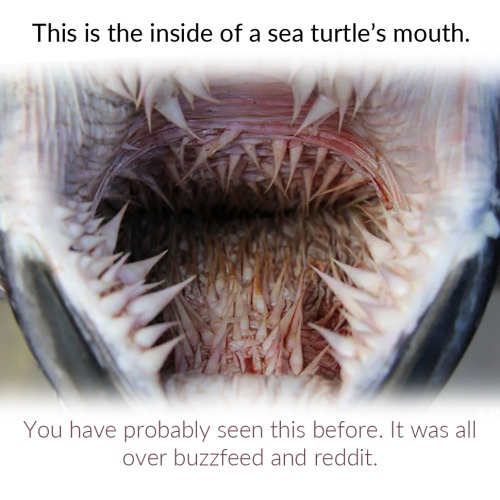
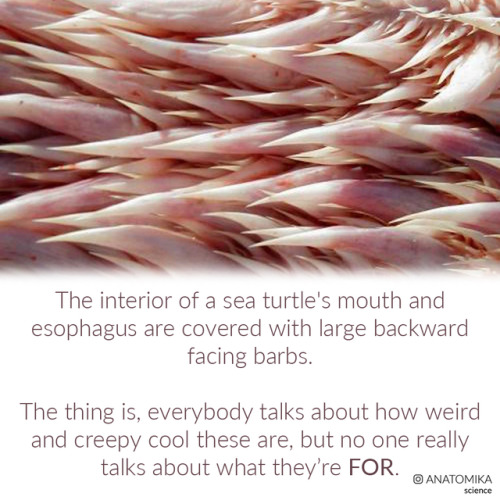
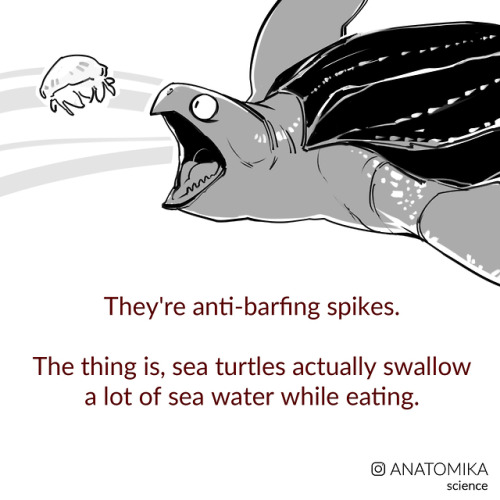
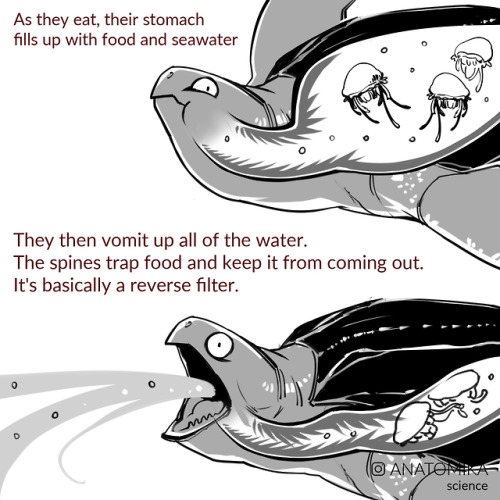
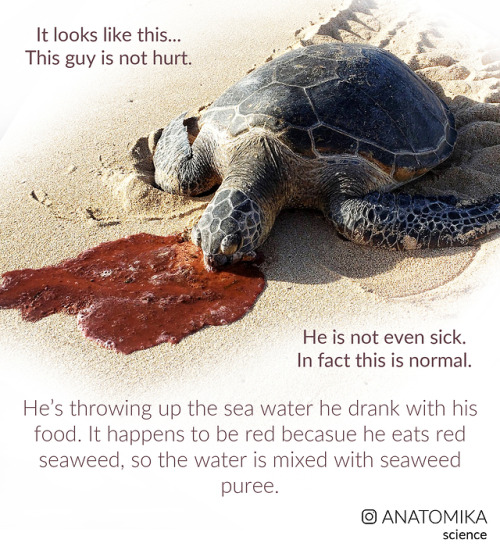
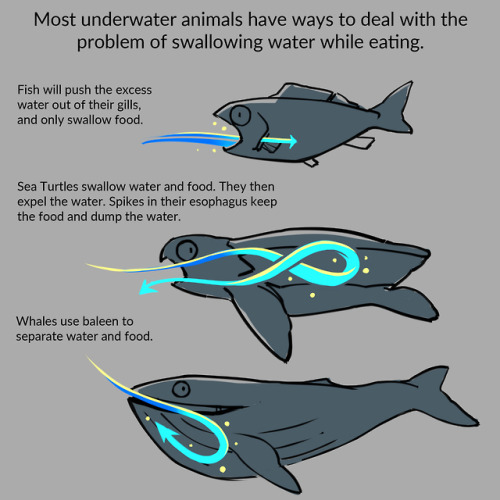
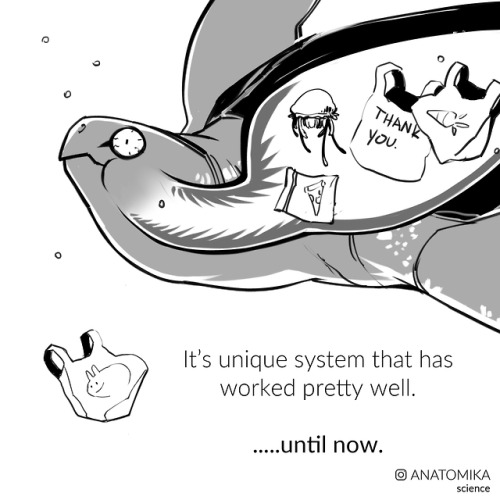
ANTI-BARFING SPIKES.
This is why they have such a problem with plastic bags. It’s because the unique structure of their esophagus makes it so that they can’t get rid of them.
Other places to see my posts: INSTAGRAM / FACEBOOK / ETSY / KICKSTARTER

Connective tissue
Anne Weston, London Research Institute, Cancer Research UK
This false-coloured scanning electron micrograph shows connective tissue removed from a human knee during arthroscopic surgery. Individual fibres of collagen can be distinguished and have been highlighted by the creator using a variety of colours. The horizontal field width of the image is 16 microns.



Urine sediment from a 6 year-old, male-intact, Rottweiler. The patient has a multi-year history of recurrent urinary tract infections. He recently presented to his primary care veterinarian for being unable to urinate. Radiographs showed no bladder stones, but a penile ultrasound showed many obstructing the urethra. The dog was then referred for surgery to relieve the obstruction…
*
The surgeons were kind enough to snag us some urine! The urine was full of these hexagonal crystals….consistent with cystine crystals! Yes, the amino acid cystine. In addition, there were all shapes of sperms (see them swimming in the background!) along with many inflammatory cells and some bacteria.
*
Diagnosis: Cystine crystalluria. This is a very rare occurrence in veterinary medicine! Such patient’s often have a genetic defect in the metabolism or transport of cystine, allowing the amino acid to accumulate in blood. Once it filters into urine, cystine will polymerize into crystals and sometimes form stones. Cystine stones do not obstruct x-rays…hence they cannot be found on standard radiographs (termed radiolucent). The patient is recovering well following surgery, and may require a special diet to help with his disease.
My blog is a private thing that is open to everyone in the world except to the people I know in real life.

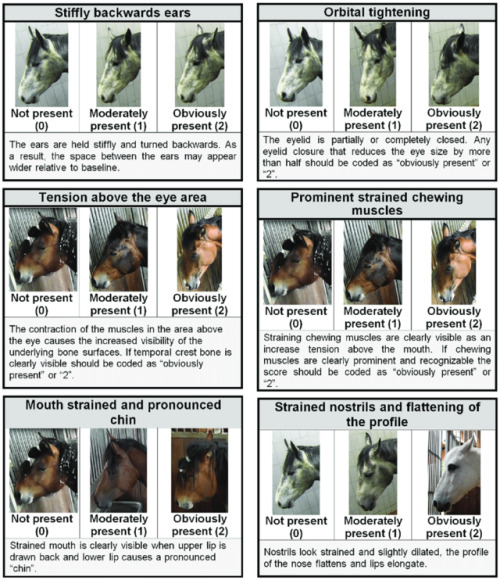

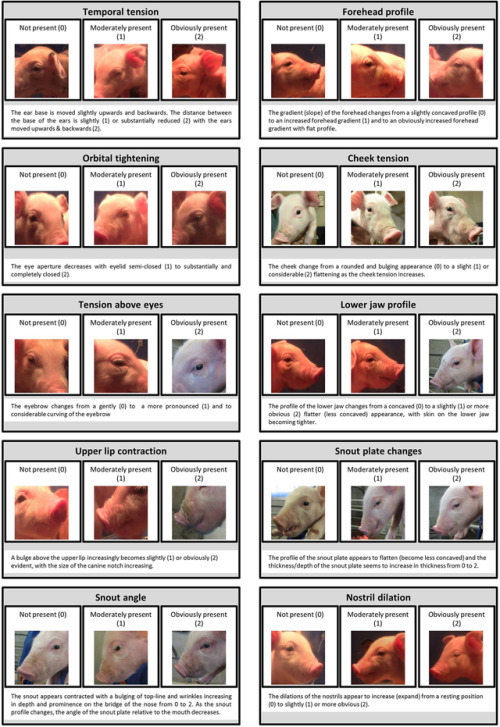



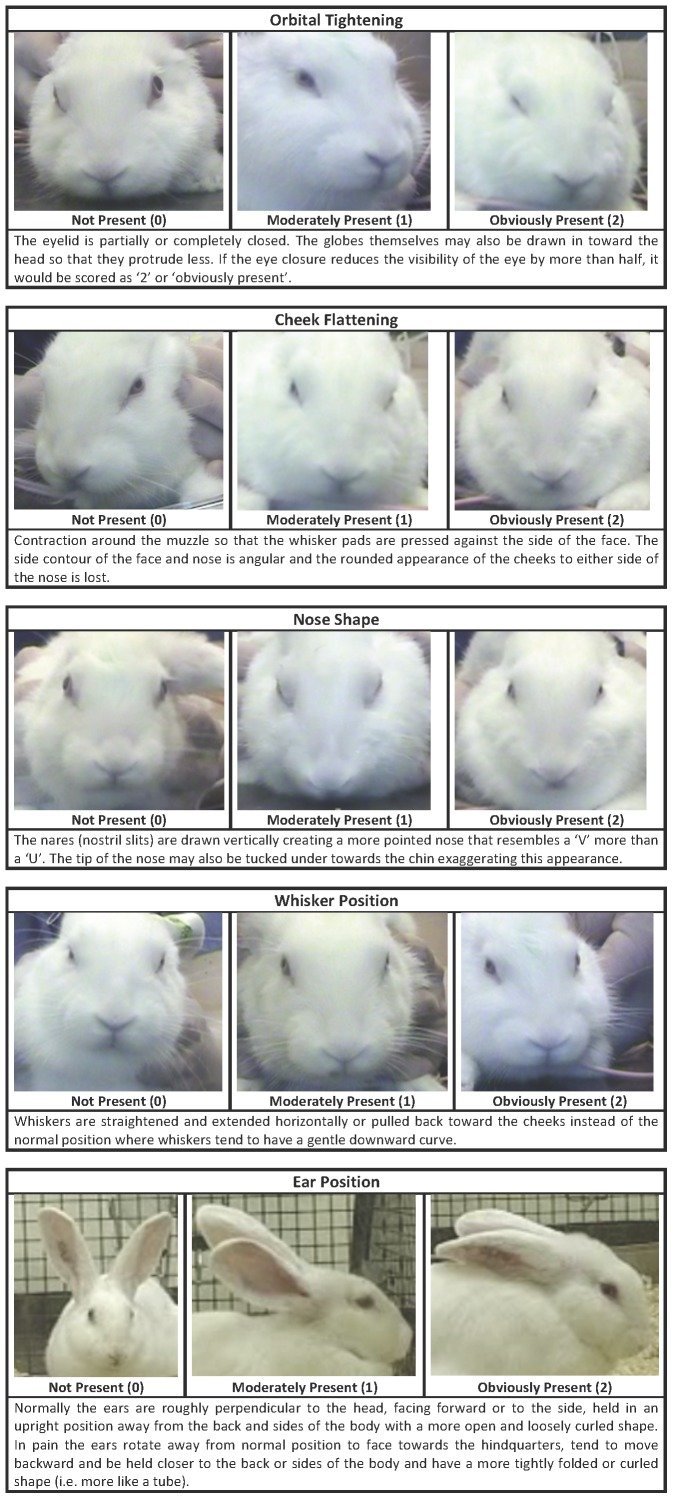

Recognising silent acute pain in animals - assorted species grimace scales:
Development of the Horse Grimace Scale (HGS) as a Pain Assessment Tool in Horses Undergoing Routine Castration
The composition and initial evaluation of a grimace scale in ferrets after surgical implantation of a telemetry probe
The Assessment of Facial Expressions in Piglets Undergoing Tail Docking and Castration: Toward the Development of the Piglet Grimace Scale
The Sheep Grimace Scale as an indicator of post-operative distress and pain in laboratory sheep and the Coding and quantification of a facial expression for pain in lambs
Mouse - How to be a pain management advocate for exotic and zoo animals (full text available - includes additional species)
The Rat Grimace Scale: A partially automated method for quantifying pain in the laboratory rat via facial expressions
Evaluation of EMLA Cream for Preventing Pain during Tattooing of Rabbits: Changes in Physiological, Behavioural and Facial Expression Responses
Pain evaluation in dairy cattle
Pain is subtle - we cannot depend on vocalisations or extreme abnormal behaviour to determine if an animal is on pain - animals can cover up pain while going about their daily life. Grimace scales have been found to be reliable indicators of pain (full text available)
Unfortunately, I could not find a clear visual grimace scale for dogs, cats or birds :(
Which is a shame, because perhaps I could have recognised my own dog’s discomfort for the acute pain it was sooner:

(left: dog in pain. See eyes, tension, cheeks, whiskers, ears compared to the multiple species grimace charts above. right: tired but not in pain dog)
Perhaps my new books that arrived today might have some on dogs at least. There’s this visual blog post of a stressed dog at the vet - stress in the absence of a trigger looks very much like pain.
Here is a small comparative cats, with the link going into more detail. Not a scale but better than nothing:


Bonus round - you can get free A3 posters on recognising pain for Rabbits, Mice and Rats from the National Centre for the Replacement, Refinement and Reduction of Animals in Research. My rabbit specialist vet has the rabbit one!


Menstruation products* but yeah real safety would be making them free as they should be 🙃
science side of tumblr tell me why
ain’t nothin but a heartache
chappelle-“remember bitch you clicked on my face”
of course i did...that’s cuz you used to be funny

-
 the-end-is-kigh reblogged this · 2 years ago
the-end-is-kigh reblogged this · 2 years ago -
 gamelpar liked this · 2 years ago
gamelpar liked this · 2 years ago -
 cold-v0dka liked this · 3 years ago
cold-v0dka liked this · 3 years ago -
 dominus-invictus liked this · 4 years ago
dominus-invictus liked this · 4 years ago -
 wings-scales-fire reblogged this · 4 years ago
wings-scales-fire reblogged this · 4 years ago -
 themythicallifeofesmerelda liked this · 4 years ago
themythicallifeofesmerelda liked this · 4 years ago -
 crispmarshmallow reblogged this · 4 years ago
crispmarshmallow reblogged this · 4 years ago -
 jew-gi-oh liked this · 5 years ago
jew-gi-oh liked this · 5 years ago -
 ipissoncomputers liked this · 5 years ago
ipissoncomputers liked this · 5 years ago -
 coffeexwhiskey liked this · 5 years ago
coffeexwhiskey liked this · 5 years ago -
 tadpoe7 liked this · 5 years ago
tadpoe7 liked this · 5 years ago -
 lenapechorin reblogged this · 5 years ago
lenapechorin reblogged this · 5 years ago -
 kimthekittycat liked this · 5 years ago
kimthekittycat liked this · 5 years ago -
 hidekomoon liked this · 6 years ago
hidekomoon liked this · 6 years ago -
 cinderstark liked this · 6 years ago
cinderstark liked this · 6 years ago -
 maquillagebookmark liked this · 6 years ago
maquillagebookmark liked this · 6 years ago -
 capaldis reblogged this · 6 years ago
capaldis reblogged this · 6 years ago -
 brokendarkfire reblogged this · 6 years ago
brokendarkfire reblogged this · 6 years ago -
 hersyzygy liked this · 6 years ago
hersyzygy liked this · 6 years ago -
 stellarstacey liked this · 6 years ago
stellarstacey liked this · 6 years ago -
 kanekai reblogged this · 6 years ago
kanekai reblogged this · 6 years ago -
 unfinished-love-letters liked this · 6 years ago
unfinished-love-letters liked this · 6 years ago -
 chdk liked this · 6 years ago
chdk liked this · 6 years ago -
 calkstis liked this · 6 years ago
calkstis liked this · 6 years ago -
 aa02100 liked this · 6 years ago
aa02100 liked this · 6 years ago -
 motherofdragons05 liked this · 6 years ago
motherofdragons05 liked this · 6 years ago -
 jester-of-disasterr reblogged this · 6 years ago
jester-of-disasterr reblogged this · 6 years ago -
 wxeak-havoc liked this · 6 years ago
wxeak-havoc liked this · 6 years ago -
 fhannajade liked this · 6 years ago
fhannajade liked this · 6 years ago -
 gvnsey liked this · 6 years ago
gvnsey liked this · 6 years ago -
 downtonks reblogged this · 6 years ago
downtonks reblogged this · 6 years ago -
 hettolandija liked this · 6 years ago
hettolandija liked this · 6 years ago -
 somethinglikethat17 liked this · 6 years ago
somethinglikethat17 liked this · 6 years ago -
 kela-styx liked this · 6 years ago
kela-styx liked this · 6 years ago -
 elisaholmes liked this · 6 years ago
elisaholmes liked this · 6 years ago -
 katherine-zeta-jones liked this · 6 years ago
katherine-zeta-jones liked this · 6 years ago -
 imayhavemisunderstood liked this · 6 years ago
imayhavemisunderstood liked this · 6 years ago -
 all-butterflies-die reblogged this · 6 years ago
all-butterflies-die reblogged this · 6 years ago -
 nickiinator liked this · 6 years ago
nickiinator liked this · 6 years ago -
 smalleponine reblogged this · 6 years ago
smalleponine reblogged this · 6 years ago -
 spazingout reblogged this · 6 years ago
spazingout reblogged this · 6 years ago -
 f1rstversedrops liked this · 6 years ago
f1rstversedrops liked this · 6 years ago
An assortment of scientific things from the wonderful world of biology
77 posts